 "ttyymmnn" (ttyymmnn)
"ttyymmnn" (ttyymmnn)
01/26/2016 at 12:35 • Filed to: planelopnik, planelopnik history
 9
9
 14
14
 "ttyymmnn" (ttyymmnn)
"ttyymmnn" (ttyymmnn)
01/26/2016 at 12:35 • Filed to: planelopnik, planelopnik history |  9 9
|  14 14 |
Welcome to This Date in Aviation History , getting you caught up on milestones and important historical events in aviation from January 23 through January 26.
!!! UNKNOWN CONTENT TYPE !!!
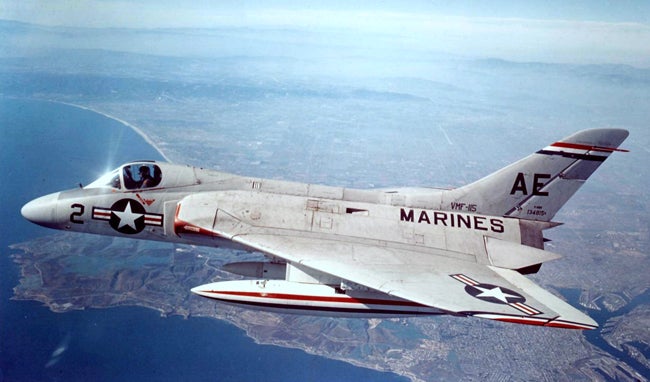
January 23, 1951 – The first flight of the Douglas F4D-1 (F-6) Skyray.
One of the most important spoils of war that the Allies took from the Germans at the end of WWII was the trove of aerodynamic research that had been carried out by German scientists. Germany was on the forefront of radical aviation design, and the Allies were soon employing many of the German ideas in their own aircraft. One of those ideas came from
!!!error: Indecipherable SUB-paragraph formatting!!!
, who had done a significant amount of research into delta wings, specifically tailless delta designs. In 1947, the US Navy issued a requirement for a new interceptor, one that could be launched from either land or sea. The new fighter would have to be very fast and have an excellent rate of climb, as it was intended to intercept bombers flying at 40,000 feet with a speed of 575 mph. With an interception range of 100 miles, the new fighter would have to reach 40,000 feet in just five minutes. Following the inspiration of Lippisch, the Douglas designers created a relatively small aircraft that had rounded delta wings and no tail. At first, they chose a sweep of 40 degrees, but soon found the aircraft to be unstable. So they increased the sweep to 52.5 degrees, which had the added benefit of shifting the center of gravity aft and improving the aircraft’s pivot point in pitch. With no horizontal tail, the pilot would control pitch and roll with the use of
!!!error: Indecipherable SUB-paragraph formatting!!!
, a movable control surface that combines the functions of ailerons and elevators. This arrangement later became standard on most delta wing designs. To help activate the elevons, Douglas employed a hydraulic boost, and in the event of hydraulic failure, the control stick could be extended by 12 inches to give the pilot more leverage. Douglas originally intended to use the Westinghouse J40 afterburning turbojet, but that engine wasn’t ready in time for use in the prototype, so they substituted a less powerful Allison engine, which significantly affected the Skyray’s performance. Ultimately, they settled on a Pratt & Whitney J57. This engine gave Douglas the performance they needed, but the larger engine meant a complete redesign of the fuselage. The change was worth it, though, because the Skyray turned out to be everything the Navy wanted in an interceptor, and could easily have been nicknamed Skyrocket (as it was, the unofficial nickname was Ford, for F4D). On October 3, 1953, the Skyray established a world speed record of 753.4 mph, and in another test, a Marine Corps pilot took his Skyray to 50,000 feet in just 2 minutes 36 seconds, setting a world record for the fastest time to that altitude. Despite the Skyray’s blistering speed, it was soon a victim of its own specialization. Designed solely as a high altitude interceptor, the Skyray was unsuited for the multi-role missions that newer aircraft were designed for. It served for only eight years before the Navy phased it out of service in 1969, though
!!!error: Indecipherable SUB-paragraph formatting!!!
continued to fly four Skyrays for research missions until 1969.
(US Navy photo)
!!! UNKNOWN CONTENT TYPE !!!
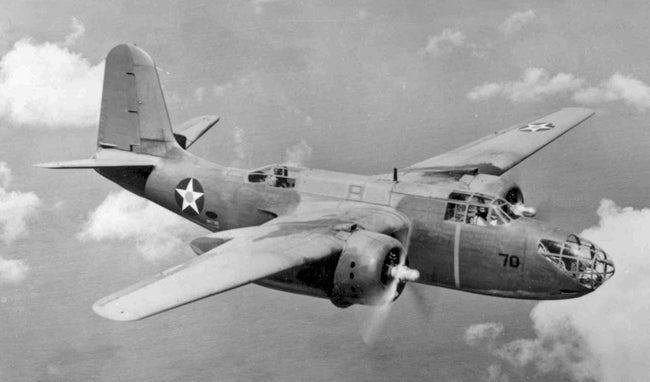
January 23, 1939 – The first flight of the Douglas A-20 Havoc.
The Douglas A-20 Havoc was arguably one of the best medium bombers of WWII, but it doesn’t get nearly as much press as its closest competitor, the
!!!error: Indecipherable SUB-paragraph formatting!!!
, even though they both arose from the same 1937 US Army request for new attack aircraft. In response to the Army’s request, North American submitted their NA-40 (which would become the B-25), Douglas proposed their DB-7 (Douglas Bomber 7, which would become the A-20), Stearman submitted the
!!!error: Indecipherable SUB-paragraph formatting!!!
, and Martin proposed their 167F (which would become the
!!!error: Indecipherable SUB-paragraph formatting!!!
). In the end, the Army chose the Mitchell, and showed little interest in the DB-7. However, the French showed significant interest in the Douglas design, and they ordered 270 DB-7s by the outbreak of WWII with their own specific modifications which included a thinner, taller fuselage, 1,000 hp Pratt & Whitney radial engines, French guns and cockpit instruments that used the metric system. Aircraft sent to France were soon flown against the German invaders, but were evacuated to North Africa with the fall of France. In battle, the DB-7 proved to be rugged and dependable, with excellent maneuverability and speed for its size. And despite the Army’s initial cool reaction to the DB-7, the improvements ordered by the French caused the Army to reassess the bomber. They found it to be a better aircraft than they one they tested earlier, and ordered both the A-20A and the A-20, the first for ground attack missions and the second outfitted for high altitude bombing missions. These A-20s would see action in both Europe and the Pacific. The Army had placed an order for 999 A-20s, but two-thirds of those were sent to Russia, and by the end of the war, the Russians had received nearly 3,000 A-20s, making it the most numerous foreign aircraft in their bomber inventory. In fact, the Russians flew more Havocs than the US Army. The British also operated the A-20, at first taking over the uncompleted order from the French. In RAF service, the A-20 was known as the Boston, and they put it to immediate use in the anti-shipping role and as a bomber and attack aircraft. A number of Bostons were also modified as
!!!error: Indecipherable SUB-paragraph formatting!!!
night fighters. In this configuration, a 2,700
!!!error: Indecipherable SUB-paragraph formatting!!!
searchlight was fitted to the nose of the bomber. Radar operators on the ground would direct the Havoc towards enemy bombers, and the Turbinlite would illuminate the bombers for accompanying fighters to attack. However, this system was not successful. Other Havocs were converted to conventional night fighters and reconnaissance aircraft. By the end of production in September 1944, nearly 7,500 Havocs had been built, with a handful also constructed under license by Boeing.
(US Air Force photo)
!!! UNKNOWN CONTENT TYPE !!!
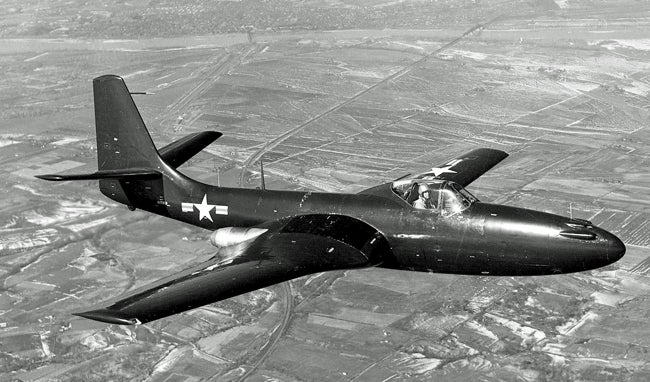
January 26, 1945 – The first flight of the McDonnell FH Phantom.
From the Wright Brothers first flight in 1903 to the present day, the technological advances made in aviation have occurred at amazing pace, and there is nothing quite like a war to speed up innovation even more. WWII was just such an instigator of technological development, a conflict that saw air forces go from biplanes to jet planes in the span of just six years. The Germans fielded the world’s first operational jet powered fighter with the
!!!error: Indecipherable SUB-paragraph formatting!!!
, followed closely by the British with the
!!!error: Indecipherable SUB-paragraph formatting!!!
. The US Army Air Forces followed later with the
!!!error: Indecipherable SUB-paragraph formatting!!!
, but the US Navy was still without a viable jet fighter of their own. They received their first jet fighter with the single engine
!!!error: Indecipherable SUB-paragraph formatting!!!
in 1946, but it was an abject failure and barely made operational status. McDonnell was relatively new to military aviation, having started out as an aviation parts supplier before developing their first aircraft, the twin-engined
!!!error: Indecipherable SUB-paragraph formatting!!!
. Though that aircraft never entered production, the Navy was still impressed with the innovative design, so they approached McDonnell in 1943 to take part in the development of a new carrier-borne jet fighter. Unlike Vought, McDonnell chose to use two engines, placing them at the roots of the two straight wings. The engines were angled slightly outboard to avoid heating the fuselage. The large nose, with the cockpit placed aehad of the wing, afforded excellent visibility for the pilot, and also allowed designers to use a tricycle landing gear. This arrangement gave the added benefit of keeping the jet blast off the carrier deck. The engines were not ready by the time McDonnell finished the prototype, so the Navy commenced ground and taxi tests using a single engine. Those tests went so well that the maiden flight of the Phantom was undertaken with just a single engine, and after the second engine was installed, the Phantom became the first US Naval aircraft to exceed 500 mph. The Navy awarded a production contract to McDonnell for 100 aircraft in 1945, though that number was reduced with the end of the war. But with the pace of development progressing so rapidly, newer, more powerful engines became available, and rather then modifying the Phantom to accept them, McDonnell began developing its successor, the
!!!error: Indecipherable SUB-paragraph formatting!!!
even before the Phantom entered production. The Phantom entered service with the Navy an Marine Corps in 1947, becoming the first US Navy fighter to successfully take off and land from a carrier. However, the Phantom was essentially obsolete when it entered service. Its relatively primitive engines limited its range and speed, and it was under armed, particularly since it was incapable of carrying bombs. Following the introduction of the Banshee, the Navy used the Phantom primarily as a trainer for pilots transitioning from propeller aircraft, and they retired it from frontline service in 1949, though it served with Naval Reserve units until 1954. Though the Phantom saw little active service, the Navy did form a demonstration squadron of Phantoms called the Gray Angels, which was made up of senior pilots holding the rank of rear admiral. The group performed on the air show circuit, but was disbanded after just one year.
(US Navy photo)
!!! UNKNOWN CONTENT TYPE !!!
Short Take Off
!!! UNKNOWN CONTENT TYPE !!!
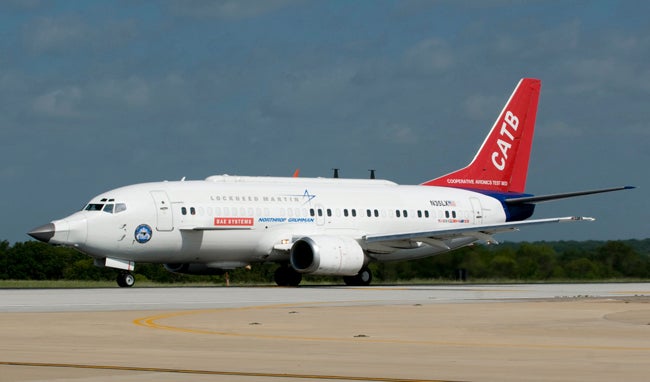
January 23, 2007 – The first flight of the Lockheed Martin CATBird (Cooperative Avionics Test Bed),
a highly modified
!!!error: Indecipherable SUB-paragraph formatting!!!
that is used to test the avionics on the
!!!error: Indecipherable SUB-paragraph formatting!!!
. Lockheed purchased the 737 from Indonesian Airlines and began the process of converting the former airlinier in 1986. With a full-sized F-35 lightning nose section on the front of the aircraft, and canards that are the exact size and position relative to the nose as the actual F-35, the CATBird provides an economical way to test the Lightning’s suite of avionics, and can carry engineers and other testing equipment aloft in a flexible system for testing different components and configurations.
(Photo via
!!!error: Indecipherable SUB-paragraph formatting!!!
)
!!! UNKNOWN CONTENT TYPE !!!

January 23, 2003 – The final communication is made between Earth and Pioneer 10,
an unmanned spacecraft that was designed to study Jupiter. Launched on March 3, 1972, Pioneer 10 made its closest approach to Jupiter on December 3, 1973. After leaving Saturn, Pioneer 10 crossed the orbit of Saturn in 1976 and Uranus in 1979, finally achieving exit velocity and leaving our solar system on March 31, 1997. After solar power to the radios and antenna had become too weak, NASA received Pioneer 10's final radio message on January 13, 2003, when the probe was 12 billion kilometers from Earth. Pioneer 10's final trajectory would take it in the direction of the star
!!!error: Indecipherable SUB-paragraph formatting!!!
, about 68 light years away. At its current velocity, it would take Pioneer 10 more than 2 million years to reach Aldebaran.
(NASA illustration)
!!! UNKNOWN CONTENT TYPE !!!
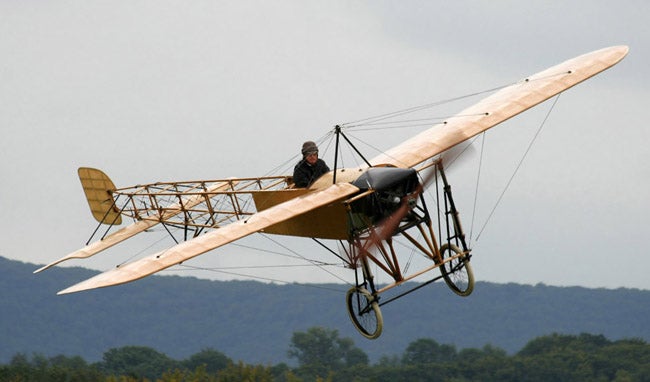
January 23, 1909 – The first flight of the Blériot XI. In the early days of aviation, flying across the English Channel seemed an insurmountable feat. The first pilot to make the journey successfully was !!!error: Indecipherable SUB-paragraph formatting!!! , flying a plane of his own design and construction, the Blériot XI. The flight made Blériot an instant celebrity, and his fame was an important factor in the success of his budding aircraft company. Produced in single and double seat configurations, the Blériot XI would see service in WWI, and would be the aircraft of choice for many pioneering aviators who used it for racing and record-setting flights. Two restored Blériot XIs exist today, and are considered the oldest flyable aircraft in the world. (Photo by J. Klank via !!!error: Indecipherable SUB-paragraph formatting!!! )
!!! UNKNOWN CONTENT TYPE !!!
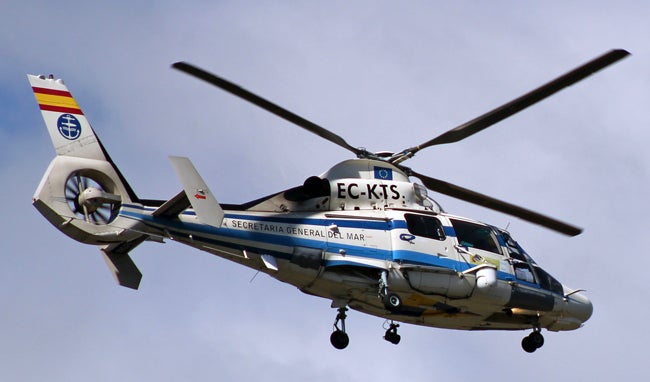
January 24, 1975 – The first flight of the Eurocopter AS365 Dauphin, a multipurpose medium helicopter that is currently produced by Airbus Helicopters. Similar in many ways to the commercially unsuccessful !!!error: Indecipherable SUB-paragraph formatting!!! , the AS365 improves on the earlier design by adding a second engine and other upgraded components. The Dauphin was originally developed by Aérospatiale, but through a series of corporate mergers it was subsequently produced by Eurocopter, and finally Airbus. The Dauphin was introduced in 1978, serves commercial and military operators and remains in production after more than 40 years. More than 1000 Dauphins have been produced to date. (Photo by Bene Riobó via !!!error: Indecipherable SUB-paragraph formatting!!! )
!!! UNKNOWN CONTENT TYPE !!!
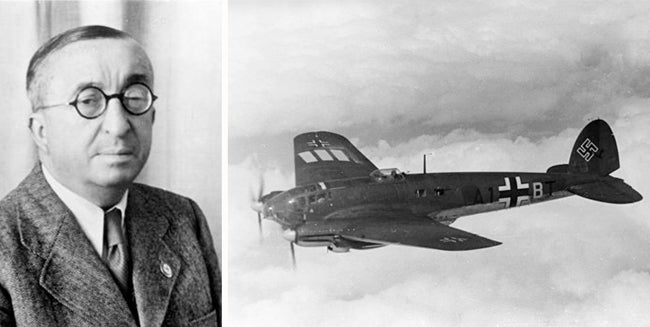
January 24. 1888 – The birth of Dr. Ernst Heinkel,
a German aircraft designer and manufacturer who supplied some of the most iconic German aircraft that fought during the Spanish Civil War and WWII. He established the
Heinkel Flugzeugwerke
in 1922, and after Adolf Hitler came to power in 1934, Heinkel provided many of the aircraft that Hitler used to build up the strength of the Luftwaffe, notably the
!!!error: Indecipherable SUB-paragraph formatting!!!
medium bomber, which made its debut in the Spanish Civil War and served as the backbone of the German bomber fleet throughout WWII. Heinkel also produced the world’s first turbojet-powered aircraft in the
!!!error: Indecipherable SUB-paragraph formatting!!!
, and the world’s first rocket-powered plane in the
!!!error: Indecipherable SUB-paragraph formatting!!!
. Heinkel died in 1958.
(Bundesarchiv photos via Wikimedia Commons.)
!!! UNKNOWN CONTENT TYPE !!!
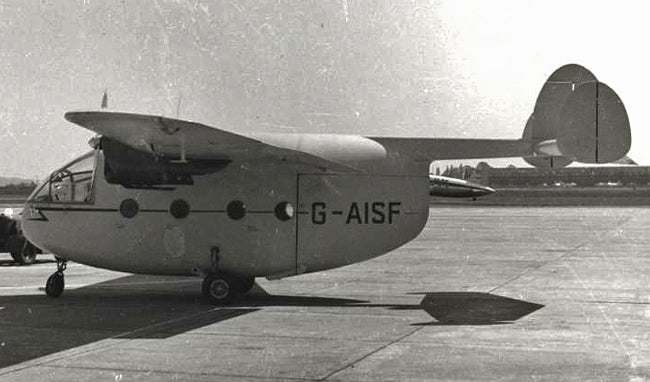
January 26, 1945 – The first flight of the Miles Aerovan. The Aerovan was conceived as a cargo hauler and multi-purpose aircraft that would be inexpensive to build and fly. Constructed of plastic-bonded plywood, the Aerovan was powered by twin !!!error: Indecipherable SUB-paragraph formatting!!! inline engines that produced 150 hp each and could haul 2,800 pounds of cargo or 10 passengers at speeds up to 127 mph. Miles followed with several variants to improve performance. Miles hoped to team up with the Irish firm !!!error: Indecipherable SUB-paragraph formatting!!! to develop a variant, but Shorts instead took the basic design of the Aerovan and developed their own plane called the !!!error: Indecipherable SUB-paragraph formatting!!! . In all, Miles produced 57 Aerovans. (Photo by RuthAS via !!!error: Indecipherable SUB-paragraph formatting!!! )
!!! UNKNOWN CONTENT TYPE !!!
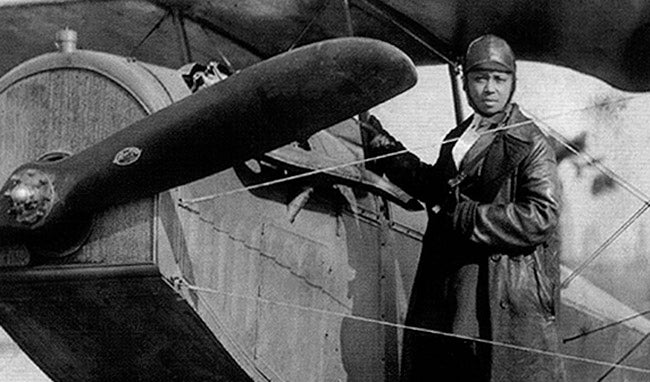
January 26, 1892 – The birth of Elizabeth “Bessie” Coleman,
the first woman of African American descent to become a pilot, and the first woman of Native American descent to hold a pilot’s license. After gaining an interest in flying after WWI, Coleman went to France in 1920 where she earned her license flying a Nieuport biplane because no American pilots would agree to train her. After returning to the US, Coleman flew on the barnstorming circuit, and hoped to establish a flight school for African American women. However, Coleman was killed on April 30, 1926 during a reconnaissance flight for a parachute display the following day. With her mechanic at the controls, Coleman, who was not wearing a seat belt, was thrown from the cockpit following an unexpected dive.
(Photo via
!!!error: Indecipherable SUB-paragraph formatting!!!
)
!!! UNKNOWN CONTENT TYPE !!!
!!! UNKNOWN HEADER TYPE (MULTI-LINE BREAK?) !!!
!!! UNKNOWN CONTENT TYPE !!!
!!! UNKNOWN CONTENT TYPE !!!
!!! UNKNOWN CONTENT TYPE !!!
!!! UNKNOWN CONTENT TYPE !!!
If you enjoy these Aviation History posts, please let me know in the comments. And if you missed any of the past articles, you can find them all at
!!!error: Indecipherable SUB-paragraph formatting!!!
.
!!! UNKNOWN CONTENT TYPE !!!
 TheHondaBro
> ttyymmnn
TheHondaBro
> ttyymmnn
01/26/2016 at 12:44 |
|
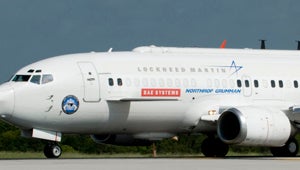
The Mosler Consulier GTP of the plane world.
 HammerheadFistpunch
> ttyymmnn
HammerheadFistpunch
> ttyymmnn
01/26/2016 at 13:04 |
|
The skyvan could be my new favorite plane...for now
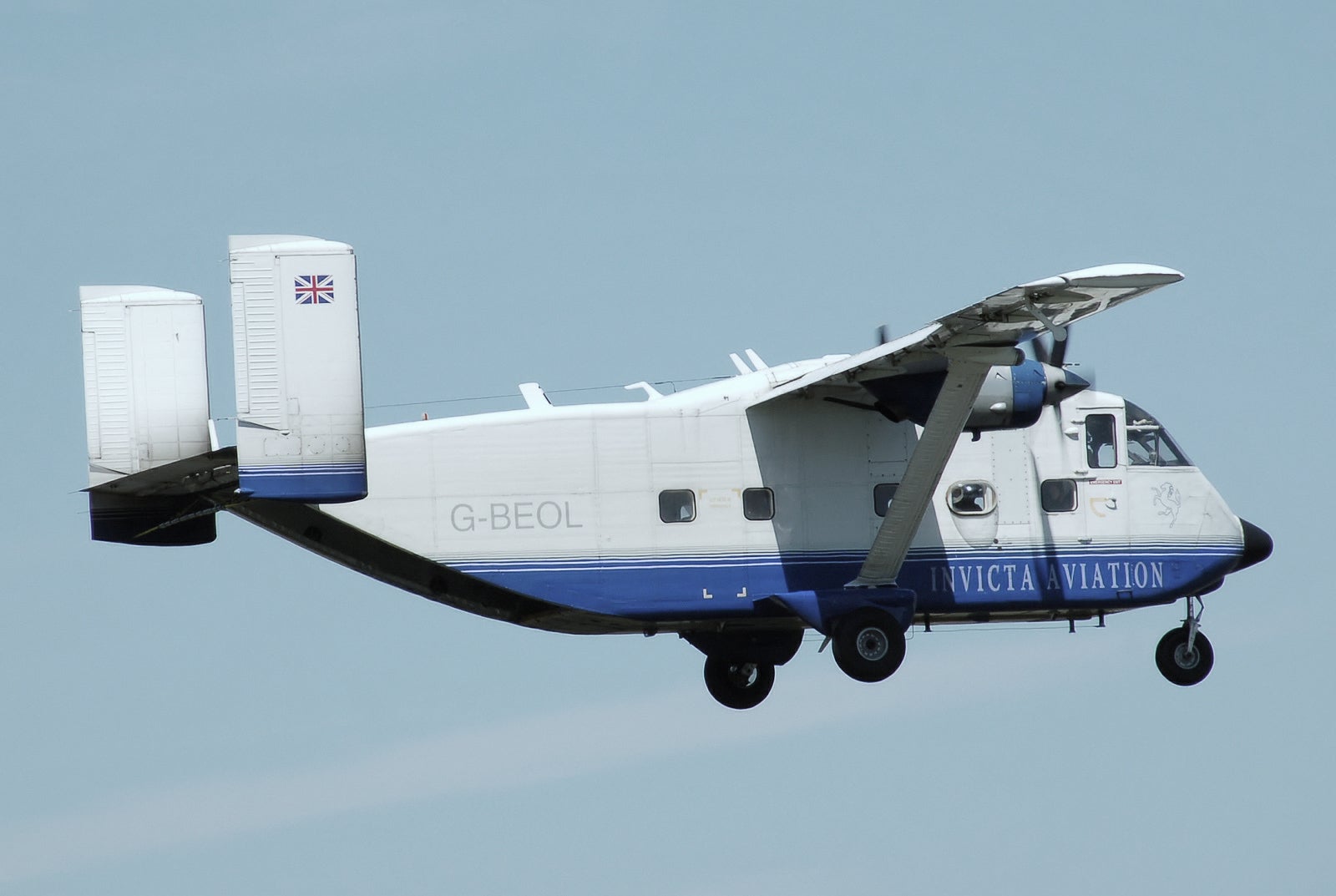
I love the “hey lets build a flying cargo container” mentality. Brilliant.
 Smallbear wants a modern Syclone, local Maple Leafs spammer
> ttyymmnn
Smallbear wants a modern Syclone, local Maple Leafs spammer
> ttyymmnn
01/26/2016 at 13:05 |
|
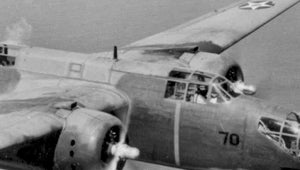
I remember hearing one story about these on a ground attack mission where the aircraft was witnessed to actually bounce off the ground and still made it home. With bent prop tips no less.
 The Powershift in Steve's '12 Ford Focus killed it's TCM (under warranty!)
> ttyymmnn
The Powershift in Steve's '12 Ford Focus killed it's TCM (under warranty!)
> ttyymmnn
01/26/2016 at 13:35 |
|
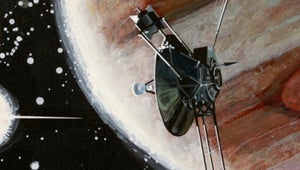
This sort of thing is so exciting to me. Even if humanity destroys itself, or is wiped out by a natural disaster, there are still some parts of us floating out among the stars. I wonder what condition this would be in after 2 million years.
 RallyWrench
> ttyymmnn
RallyWrench
> ttyymmnn
01/26/2016 at 14:01 |
|
There’s a documentary on Netflix called Black Wings, with a good bit on Bessie Coleman. Hell of a woman.
 ttyymmnn
> The Powershift in Steve's '12 Ford Focus killed it's TCM (under warranty!)
ttyymmnn
> The Powershift in Steve's '12 Ford Focus killed it's TCM (under warranty!)
01/26/2016 at 14:22 |
|

Wait, that was V’ger. What would this one call itself? P’ner?
 ttyymmnn
> Smallbear wants a modern Syclone, local Maple Leafs spammer
ttyymmnn
> Smallbear wants a modern Syclone, local Maple Leafs spammer
01/26/2016 at 14:22 |
|
I wouldn’t be at all surprised. They built ‘em strong back in the day.
 You can tell a Finn but you can't tell him much
> The Powershift in Steve's '12 Ford Focus killed it's TCM (under warranty!)
You can tell a Finn but you can't tell him much
> The Powershift in Steve's '12 Ford Focus killed it's TCM (under warranty!)
01/26/2016 at 14:38 |
|
It may be pretty well preserved. At this point in its life it isn’t subjected to a whole lot of UV radiation, and since it’s in a vacuum there shouldn’t be a whole lot of corrosion going on. No vibrations to speak of either. Really it depends on how well it holds up to gamma rays and whether or not a stray bit of rock/dust/ice or other particles hit it.
 The Powershift in Steve's '12 Ford Focus killed it's TCM (under warranty!)
> You can tell a Finn but you can't tell him much
The Powershift in Steve's '12 Ford Focus killed it's TCM (under warranty!)
> You can tell a Finn but you can't tell him much
01/26/2016 at 15:10 |
|
That’s more or less what I figured. Would gamma rays break down the materials that make it up over enough time? I’m honestly not sure what high energy particles do to metals, especially over millenia.
 MonkeePuzzle
> ttyymmnn
MonkeePuzzle
> ttyymmnn
01/26/2016 at 15:17 |
|
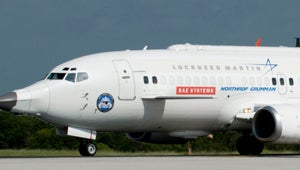
fascinating!
 facw
> ttyymmnn
facw
> ttyymmnn
01/26/2016 at 22:22 |
|
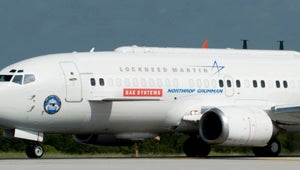
I like the canard style forward wing. The one on the Catfish’s head is very odd looking (I was confused as hell when I saw it):

 ttyymmnn
> facw
ttyymmnn
> facw
01/26/2016 at 23:04 |
|
I didn’t really have the space to make it clear, but the canard on the CATBird is in the exact spot relative to the mock F-35 nose because there are sensors on both the nose the the wing that work together, so placement was important. I guess it wasn’t an issue on the F-22.
 Rusty Vandura - www.tinyurl.com/keepoppo
> ttyymmnn
Rusty Vandura - www.tinyurl.com/keepoppo
> ttyymmnn
01/27/2016 at 16:31 |
|
Skyray: you’ve found one that I hadn’t heard of.
 ttyymmnn
> Rusty Vandura - www.tinyurl.com/keepoppo
ttyymmnn
> Rusty Vandura - www.tinyurl.com/keepoppo
01/27/2016 at 16:40 |
|
Not surprising, really, since it had such a short operational life. But it’s always been one of my favorites. It was designed by Ed Heinemann, who also designed the A-4 Skyhawk, which pilots called “Heinemann’s Hot Rod.” Small, light and powerful. Take a look at the
list
of aircraft Heinemann designed. It’s pretty impressive.